Rockwell, of course, painted so much more than kids. In his fourth decade with the Post, he painted some memorable covers of the fair sex. Some look like “Rockwells” (“The Charwomen” and “First Gown,” for example) and some will surprise you.
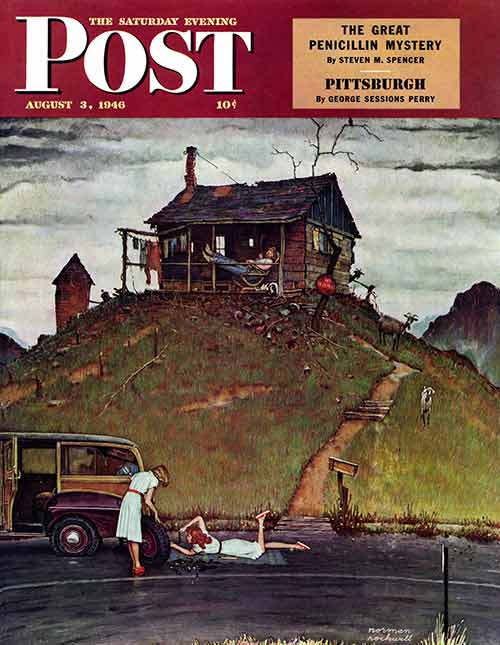
August 3, 1946
How to put together a cover for The Saturday Evening Post: First, get an idea and run it by the art director for approval. Second, find the setting for the scene. Locating a ramshackle cabin in Vermont proved difficult, so Rockwell found a nicely kept hunting lodge and, to say the least, took liberties.
Next, borrow a couple of goats from a neighbor. Finally, choose your models. The lazy, good-for-nothing onlooker on the porch was a friend of the artist who was nothing like the shiftless character portrayed here. The young ladies were daughters of friend and fellow cover artist, Mead Schaeffer. And the landscape? It sprang from the imagination and palette of the artist. “You just couldn’t make it look like Vermont,” Rockwell said, “because in Vermont, they’d yelp.”
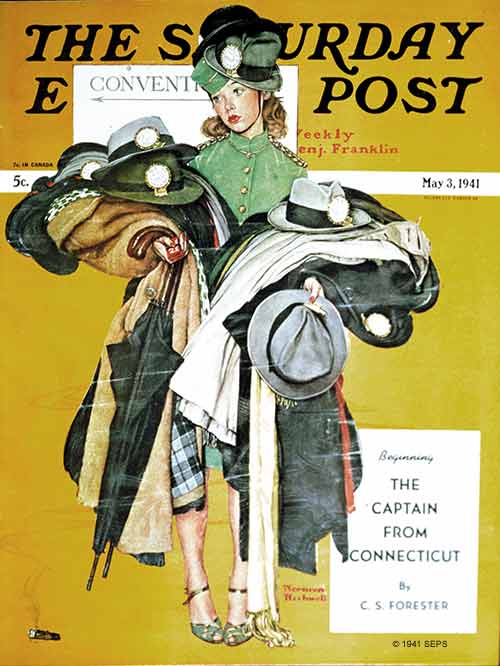
May 3, 1941
Rockwell liked faces with “character,” so this pretty young lass is atypical of his models. The scene is somewhat atypical as well—a big city convention. First jobs often consist of being a babysitter or a soda jerk, but a coat rack? Can she remember which black umbrella went with which gentleman?
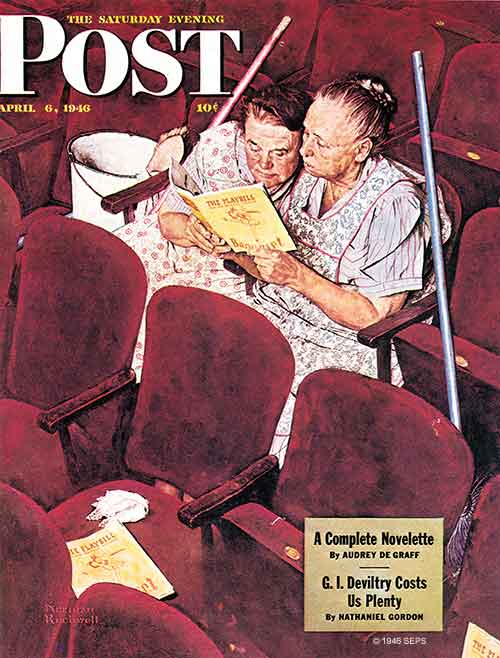
April 6, 1946
Certainly Rockwell was loved for his paintings of children, but what other illustrator would think of painting two elderly charwomen? Typical Rockwell touches include the minute detail of the patterns on the aprons, a well-worn mop handle, and an environment less than “perfect”—a little debris here and there. That was part of Rockwell’s brilliance—so many artists “cleaned up” the setting, even of kids playing outside.
The ladies in question were well-respected neighbors of the artist, who had reservations about posing as cleaning ladies. Rockwell convinced them they were only acting, and they played their roles very well. They were delighted with the result and said they would pose any time without arguing about the roles to be played. It wasn’t always thus. One matron was “Rockwellized” as a portly maid and never spoke to him again.
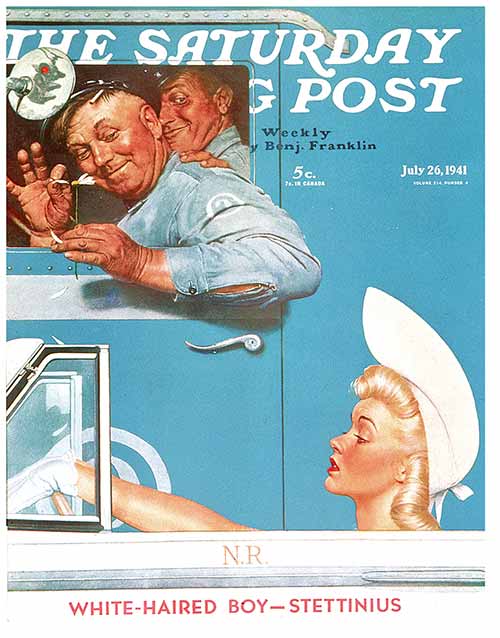
July 26, 1941
A gorgeous blonde in a convertible? How can it not be love at first sight? Stopped at a red light (which we see reflected in the truck’s mirror), a trucker picks petals to determine if “she loves me” or “she loves me not.” A few questions spring to mind: why did the guy just happen to have a daisy on hand, and how did the lady keep her hat on—never mind her hair perfect—driving an open car? And why, oh why have people complained that this cover is an example of sexual harassment? Oh, please! It’s clearly all in the spirit of fun! (Geez, I thought the blonde in the convertible needed to lighten up…)
Two unique things about this cover: This was the first cover where the artist just used his streamlined initials instead of his full name, and Rockwell played with the masthead as part of the truck signage.
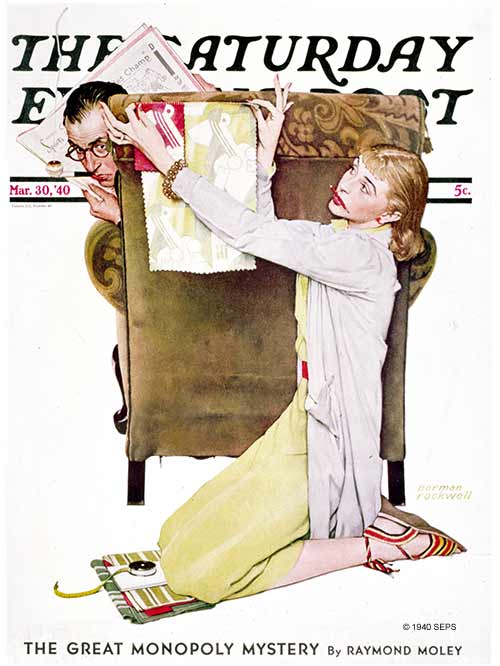
March 30, 1940
Another cover that doesn’t look “like a Rockwell.” Hubby’s favorite chair may be in for a bit of spring brightening up, and he may not be pleased with the idea. Or maybe he just wants to enjoy his sports page and pipe in peace.
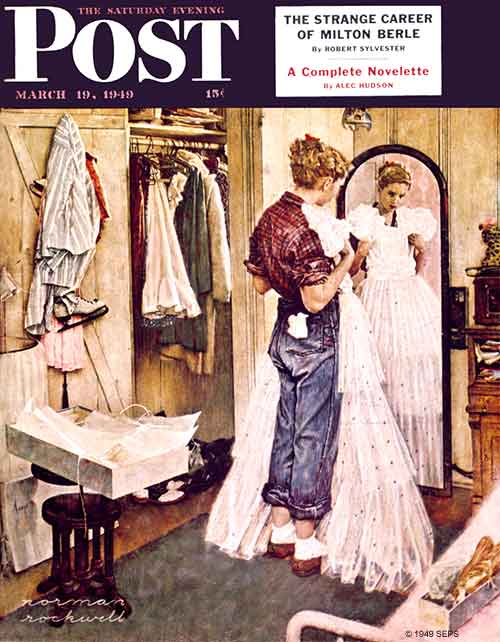
March 19, 1949
Far from home in Vermont in late 1948, Rockwell rented a studio while visiting sunny California. Only it wasn’t. That particular winter was rainy, and the poor natural lighting in the studio frustrated the artist to the point that he kept taking this painting into the men’s room to review it in better light. The result, despite the problems, is a delightful bobby soxer checking out her first gown. Somewhere there must be a mother grateful to see the dungarees, loafers and socks disappear, if only for an evening.
Become a Saturday Evening Post member and enjoy unlimited access. Subscribe now
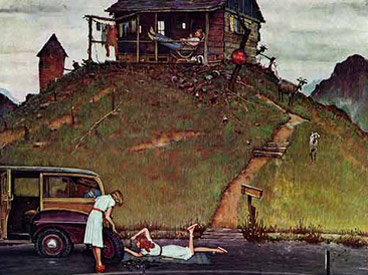

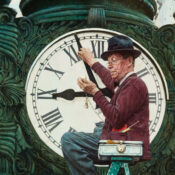
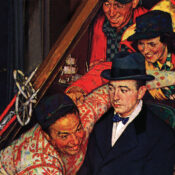
Comments
‘Fixing a Flat’ has such a great story behind it. Rockwell really put a lot of extra effort into it, but was totally worth it. The detail is amazing, especially on the cabin. It definitely looked more Ozark than Vermont.
‘Convention’ is great. This girl needs a place to put all that stuff, and put OUT that smoldering cigar!
‘The Charwomen’ is another classic with an interesting story. I’ll bet you this is one of Carol Burnett’s favorites too.
‘The Flirts’ is GREAT! The blonde, her car, the truck, the expression’s on the the guys’ faces, the optical illusion created by the POST logo on the truck and the reflection of the red stop light.